PHIL JARRATT concludes his in-depth conversation with iconic playwright DAVID WILLIAMSON
“Our new lifestyle of living in Noosa with forays to Sydney began, but Noosa was now definitely home. Kristin, however, was becoming increasingly dissatisfied with our apartment in Marcus Beach … The smart real estate agent who’d sold it to us, Peter Butt, heard on the grapevine that Kristin was unhappy and … wouldn’t you know, just happened to have the perfect place for us on his books. He took us to Aeolus … a beautiful modular design by John Mainwaring … it was so beautiful that Kristin wept. So did I when I heard the asking price!”
PJ: You’re still here, and it is lovely. What was it about this place that brought Kristin to tears?
DW: The aesthetics of the place, a minor Mainwaring masterpiece without a right angle in it, and of course, direct access to a beach that goes on forever. The blueberry ash tree that we’re looking at is a rainforest tree that’s been there for well over 100 years. The natural beauty of the place just overwhelmed us.
PAGE 336
“The move to Noosa had delivered all we expected in terms of environment, climate, good restaurants and a relief from stress-laden Sydney. But Kristin had also identified the big downside of any major shift. Friendships, that vital glue of a happy life, were missing … At our age you can’t just pluck new and genuine friendships out of the air. Wouldn’t the locals like to get to know a well-known playwright and his novelist wife? Not really.
DW: Through our next-door neighbor David Thomas, we met up with his friends Glen and Michael Gloster over a dinner, and through Michael we came into contact with Brett Dean, who had played viola with the Berlin Philharmonic, probably the best orchestra in the world, and who now had a place up here where he composed. He’d have impromptu concerts in his big front room with all of his family playing, and from that the idea of a music festival in Noosa evolved. Others got involved and Australia Post agreed to become a sponsor, and the Noosa Long Weekend [now Noosa Alive!] was born. Through all of this, our circle of friends widened and we found we were surrounded by people of similar interests.
NT: Did Michael Gloster share his dream of a World Heritage listing for Noosa based on its culture as well as its environment?
DW: Yes, he did, and we certainly knew how deeply passionate he was about classical music and about the Noosa Music Society, which we also joined. And we joined the Film Society, and we quickly realized that Noosa wasn’t all about sun, sand and surf. There was also a thriving cultural side, to which we hoped the Long Weekend would add a new element. Another of our objectives was to provide a world class entertainment space, which Noosa didn’t have. We had the Bicentennial Hall with its hopeless acoustics. Gloster led the campaign for a proper performance auditorium, but we had a terrible battle convincing people it was necessary. Years before, when Gympie floated the idea of a space for the performing arts, the community got right behind it. Now you don’t normally associate Gympie with the arts, but they built a wonderful space and we couldn’t get that support. I remember at our first public meeting we had drawings from the architect Andrew Andersons, that David Thomas had funded. Andrew had done the Sydney Opera House forecourt, and many other public space designs, and what he’d done for Noosa was a wonderful design, but all these troglodytes trooped in and started bellowing, “We don’t want a f…ing opera house here!” I was astounded, and the only way that we ended up with any kind of performance space was because there were federal grants for youth centres, and as long as it was for youth and not for culture, we could have The J! Kris and I found the anti-arts sentiment in this community really weird, given how many cultural organisations there were. We realised that there are still a lot of tribes in this town, and some of them simply hate each other.
PJ: Can you briefly share the story from the book of freezing onstage while acting in your own play Charitable Intent at the first Noosa Long Weekend?
DW: There was a very early judgement of me that I should remain the writer and not become an actor, but I refused to believe it. [Laughs] Everyone thinks they’re better than they are, so I thought I’d prove it. I threw myself right into the role and made a wonderful impression on the first night by forgetting my own lines! I walked on stage and had no idea what I was meant to be saying. Luckily Frank Wilkie, now our deputy mayor, rescued me with prompts.
Noosa Arts Theatre has been an admirable enterprise from such a humble beginning 50 years ago. Through sheer hard work it’s been turned into a lovely and comfortable theatre. The first time I came up for the opening of one of my plays I could barely hear the dialogue. It was a hot night and there were these huge fans overhead! What they’ve done since then is totally wonderful.
PAGE 359
“By early 2008, I had completed the first draft of a play that returned to using elements of my own life. If Emerald City had been about the transition from Melbourne to Sydney, Let The Sunshine was about the sort of things Kristin and I faced moving from Sydney to Noosa.”
DW: Let The Sunshine was one of my most popular plays, about a Sydney documentary maker who had made a huge mistake by not checking the credentials of one of his interviewees who turned out to have given him false information. He was a progressive so the right wing stomped on him and he felt he had to get out of town and convinced his wife to move to Noosa. One of the wife’s old school friends has become a queen bee of Noosa and her husband is a huge property developer. They’re fabulously rich and they have a very smart lawyer daughter who falls in love with the doco maker’s surfie-musician son. It’s the Capulets and the Montagues without the swords. The families are horrified.
PJ: Did any Noosa people recognise themselves?
DW: Well, to some extent I’d used the real-life backdrop of our son Felix falling in love with a very successful girl whose father was a successful businessman who lived in Noosa. That was the factual basis of it, but the fictional characters were certainly nothing like the real ones. Although my bullying billionaire character, Ron, may have had a bit of a few locals in him. [Laughs]
PJ: During the Noosa years your output has been phenomenal – more than half of your plays written in the last 20 years. Why were you in such a hurry?
DW: It was just a great place to work. I always felt that I was half at work and half on holidays. I only had to raise my eyes above the keyboard and see the greenery and the beach, and all the cares of the job would lift from my shoulders. Also, being here lifted my soul and that made me more productive.
PJ: So you never felt you were becoming out of sight, out of mind?
DW: Oh no, because we’ve always had a bolt-hole in Sydney so that we could connect when needed.
PAGE 388
“When we got home [from a family holiday in Bali] there was nothing in the fridge and we went around the corner to … Embassy XO. To celebrate I had a Negroni and half a bottle of wine, and couldn’t believe it when, on the short drive home, the flashing lights of a police car turned on behind me … I tested 0.06, just over the limit, and was taken straight to the police station … At the station the middle-aged cop looked at me.
COP: You’re David Williamson, aren’t you?
DAVID: Yes.
COP: Recognised you from the photo on the back of the play we had to study at school.
DAVID: Ah, which one was that?
COP: The one where the cops beat the guy to death … bit tough on the force, weren’t you?”
PJ: I love this story. What are the odds?
DW: Well, you’ve no idea what a widespread text The Removalists was in the school system! It sold about 300,000 copies. But it was sweet revenge. He was quite genial about it, but there was no way I was going to get let off. [Laughs]
PJ: Have we truly seen the last Williamson play or will you be a Melba?
DW: Having written 150,000 words for Home Truths I feel like I never want to see a word processor for quite a while. There’s no saying I won’t be enticed in the future, but for now, I’ve done 50 years as a playwright and now I’ve written a book about it, that’ll do me for a while.
PJ: So what does the future hold?
DW: It’s not hard to find things to do when you have five kids and 14 grandkids. The older we get, the more satisfaction we’re getting out of family and friends. And I’m more than happy to sit here, reading and thinking. I can tell you this much, I won’t be joining a men’s shed!
PJ: What has Noosa given you most?
DW: A place I feel at home. Whenever we go away, as I said earlier, we get on that road up the coast and we’re home. A sense of belonging is so vital to all of us, and this is where we belong.
David Williamson’s memoir, Home Truths, is available from all good bookstores.

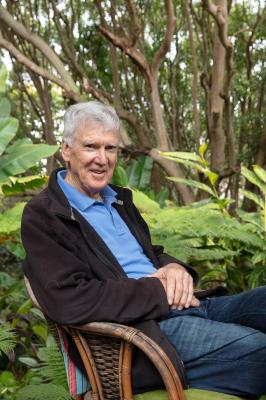


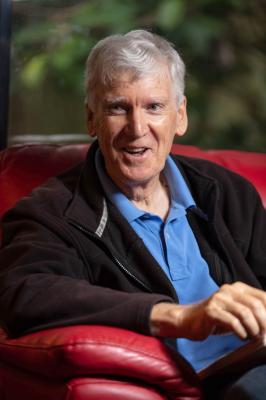
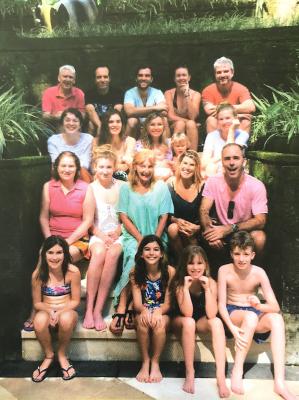
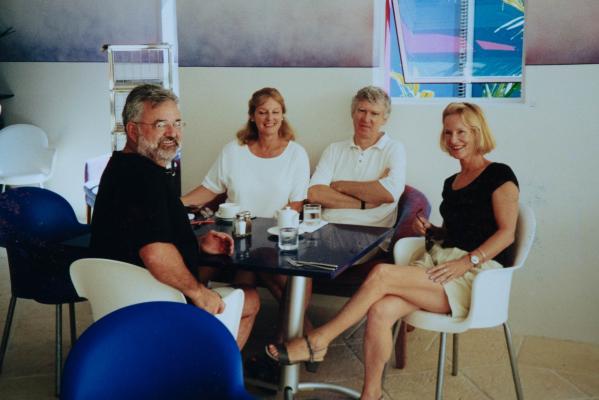
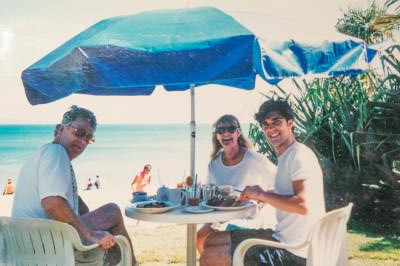
![[READER COMPETITION] – Win tickets to see Sharon and Slava Grigoryan present ‘OUR PLACE’](https://noosatoday.com.au/wp-content/uploads/2025/07/sharon-and-slavav-324x235.png)




